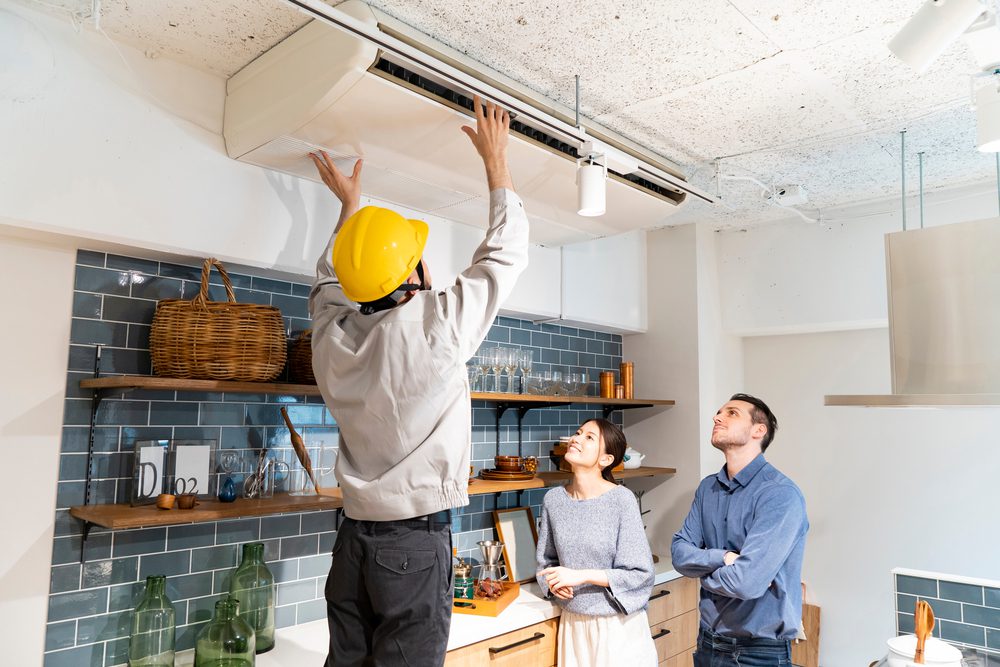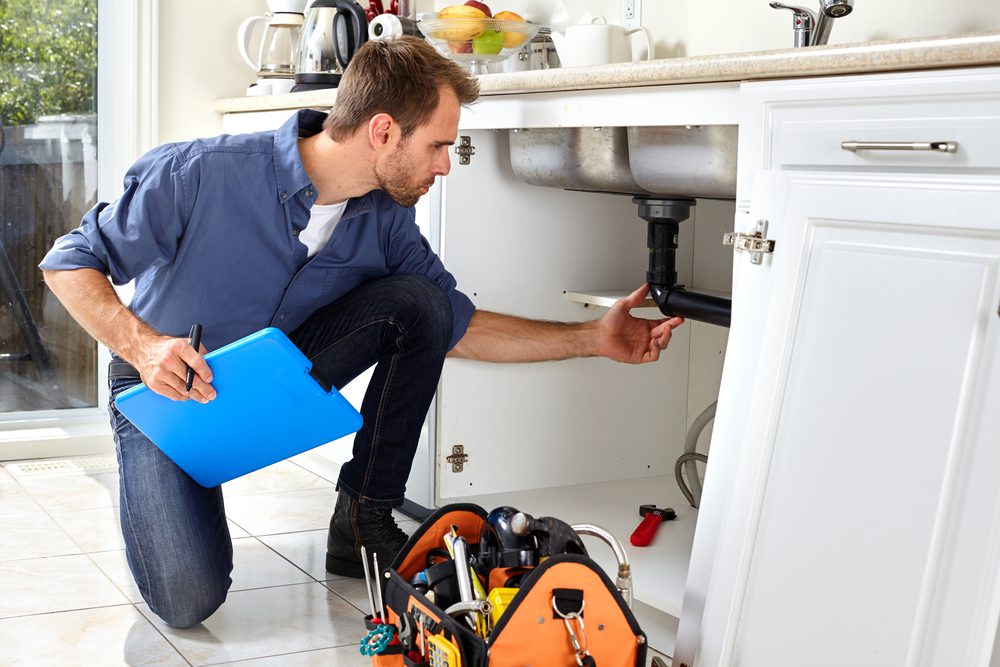
Tired of paying high energy bills because of inefficient heating, cooling, lighting, and appliances? More than 51% of US homes are energy inefficient, which increases your energy bill costs and degrades the lifespan of your equipment and systems.
Your home may be in need of a home energy audit where an inspector can identify energy inefficiencies in your home that may contribute to home temperature swings, indoor air quality issues, and increased noise levels, making the home less enjoyable to live in.
We’ll explain what a home energy audit is and why your home needs an audit as soon as possible. Getting an audit will create a home improvement plan to lower your utility bills, decrease your carbon footprint, and increase the value of your home.
What Exactly Is a Home Energy Audit?
A home energy audit assesses a house’s energy use and efficiency. The purpose of a home energy audit is to identify areas where energy is being wasted and to make recommendations for improvements that can increase energy efficiency, lower energy bills, and make the home more comfortable.
The process typically includes a visual inspection, measurement of air infiltration, and a review of energy bills and usage patterns. Not only will the technician check the outside of your home, but they might walk up to your attic to look for leaks, inspect holes where electrical lines are wired, ductwork, lighting, how well your insulation is working, and, of course, your appliances. It takes about 2 to 4 hours to conduct a home energy audit. The length of the audit depends on the size of the home, the complexity of the energy systems, and the thoroughness of the audit process. A home energy audit costs between $300 to $800, depending on the location and the complexity of the audit.
Some utility companies offer free or low-cost energy audits to their customers, so it may be worth checking with your local utility to see if they offer this service.

7 Benefits of a Home Energy Audit
The seven best benefits of a home energy audit include:
1. Saves You Money
A home energy audit saves homeowners money by recommending areas for improvements to increase energy efficiency. Homeowners can upgrade to energy-efficient equipment and systems to lower their utility bills and increase their home’s value by identifying:
- Air leaks
- Insufficient insulation
- Outdated lighting and appliances
- Heating and cooling system inefficiencies
By implementing the recommendations from a home energy audit, you can save between 5 – 30% on your monthly energy bill.
2. Enhances Energy Efficiency
A home energy audit improves energy efficiency by identifying areas where energy is being wasted. During the audit, the energy auditor will inspect the home for inefficiencies. The auditor will also review energy bills and usage patterns to identify opportunities for improvement.
By implementing the recommendations from the energy audit, homeowners can reduce their energy consumption and reduce their carbon footprint. Some reports have found that implementing the recommendations can reduce your energy consumption by 25-30%.
3. Identifies Potential Structural Problems
A home energy audit can find a range of problems that can contribute to energy waste and inefficiency in a building. The most common problems that a home energy audit can identify include:
- Unsealed openings in the building envelope, such as doors, windows, and vents, can let in unwanted air, causing heating and cooling losses.
- Areas of the home where the insulation is insufficient or outdated, it can lead to heat loss in the winter and heat gain in the summer, making it difficult to maintain a comfortable temperature inside the home.
- Energy-inefficient lighting and appliances can consume a lot of energy, resulting in higher energy bills.
- Health risks like carbon monoxide emissions where equipment isn’t vented properly.
4. Improves Health and Safety
A home energy audit can improve safety and health in several ways:
- Detecting the presence of gas leaks can be a health hazard and a fire risk. Repairing these leaks can improve the safety of the home.
- Improving indoor air quality by identifying sources of indoor air pollution, such as mold, radon, and carbon monoxide, and making recommendations for improvement.
- Addressing fire hazards in the home, such as overloaded electrical circuits, frayed wires, and improperly installed appliances, and making recommendations for improvement.
- Identifying poor ventilation that can lead to excess moisture, mold, and other indoor air quality issues. Adding exhaust fans or air exchange systems can improve your air quality.
- Upgrading outdated or unsafe electrical systems, such as aluminum wiring, and making recommendations for upgrades that can improve the safety of the home.
5. Adds More Value to Your Home
Implementing the recommendations from an energy audit boosts the value of your home by making it more attractive to potential buyers. Homes with updated appliances, fixtures, insulation, and energy-efficient systems become selling features buyers will pay more for.
Energy Star studies found buyers will pay a 3-5% premium over less efficient comparable homes that are less efficient. When you can get a free home energy audit from Hutchinson, it makes getting an audit a no-brainer.
6. Longer Equipment Lifespan
Implementing the recommendations from a home energy audit extends the lifespan of equipment by:
- Reducing the strain on heating and cooling systems, appliances, and other equipment.
- Improving the equipment’s performance.
- Sealing air leaks and upgrading insulation can reduce the need for frequent repairs and replacements of equipment.
- Installing updated energy-efficient equipment has a longer overall lifespan than older equipment because it is more efficient.
Longer lifespans for your home equipment mean lower home improvement costs and a reduced carbon footprint.
7. Improves Your Comfort Level
Following the recommendations from a home energy audit improves your comfort by:
- Reducing heat loss in the winter and heat gain in the summer, making it easier to maintain a comfortable temperature inside the home.
- Improving indoor air quality by pinpointing air pollution sources, such as mold, radon, and carbon monoxide.
- Reducing noise in the home when you add insulation or upgrade windows, creates a quieter and more peaceful living environment.
- Increasing natural sunlight when you upgrade lighting and add skylights, makes it brighter and more inviting.
8. Reduces Environmental Impact
On average, a typical single-family home in the United States produces about 5-10 metric tons of carbon dioxide emissions per year. However, this amount can be higher for older, less energy-efficient homes, or for homes with high energy consumption habits.
The primary sources of carbon emissions in a home are heating and cooling systems, water heating, lighting, and appliances. By reducing energy consumption and upgrading to energy-efficient equipment, you can reduce your carbon footprint and help to mitigate the effects of climate change.
Call Hutchinson for Home Energy Audit Today
At Hutchinson, we have over sixty years of experience in helping homeowners improve the energy efficiency of their homes and quality of living. We provide a variety of home energy services and solutions. Book an appointment online with us today!


